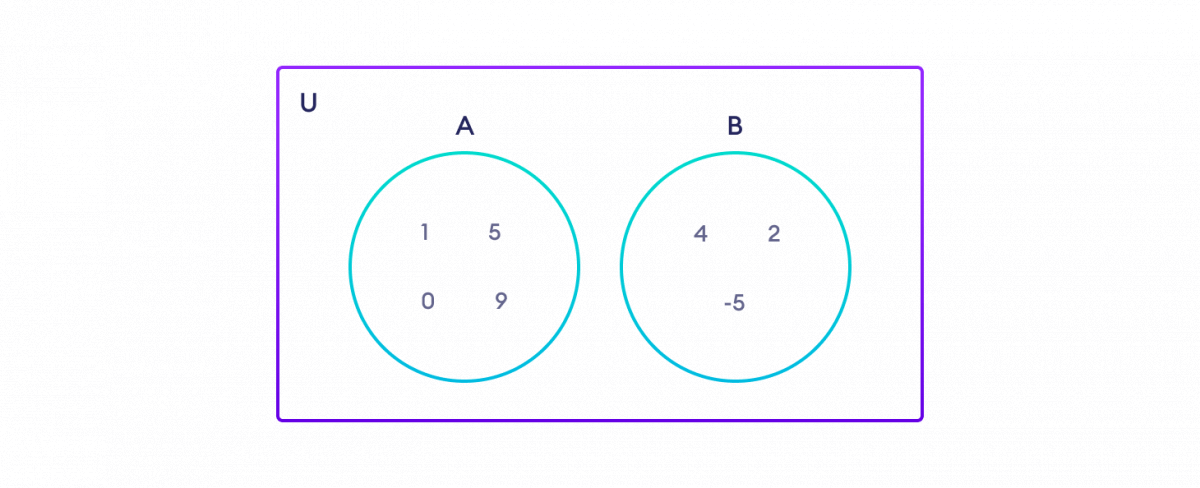Table of Contents
The isdisjoint() method returns True if two sets are disjoint sets. If not, it returns False.
Two sets are said to be disjoint sets if they have no common elements. For example:
A = {1, 5, 9, 0}
B = {2, 4, -5}
Here, sets A and B are disjoint sets.

The syntax of isdisjoint() is:
set_a.isdisjoint(set_b)
1. isdisjoint() Parameters
isdisjoint() method takes a single argument (a set).
You can also pass an iterable (list, tuple, dictionary, and string) to disjoint(). isdisjoint() method will automatically convert iterables to set and checks whether the sets are disjoint or not.
2. Return Value from isdisjoint()
isdisjoint() method returns
Trueif two sets are disjoint sets (if set_a and set_b are disjoint sets in above syntax)Falseif two sets are not disjoint sets
3. Example 1: How isdisjoint() works?
A = {1, 2, 3, 4}
B = {5, 6, 7}
C = {4, 5, 6}
print('Are A and B disjoint?', A.isdisjoint(B))
print('Are A and C disjoint?', A.isdisjoint(C))
Output
Are A and B disjoint? True Are A and C disjoint? False
4. Example 2: isdisjoint() with Other Iterables as arguments
A = {'a', 'b', 'c', 'd'}
B = ['b', 'e', 'f']
C = '5de4'
D ={1 : 'a', 2 : 'b'}
E ={'a' : 1, 'b' : 2}
print('Are A and B disjoint?', A.isdisjoint(B))
print('Are A and C disjoint?', A.isdisjoint(C))
print('Are A and D disjoint?', A.isdisjoint(D))
print('Are A and E disjoint?', A.isdisjoint(E))
Output
Are A and B disjoint? False Are A and C disjoint? False Are A and D disjoint? True Are A and E disjoint? False
Related posts:
Python Machine Learning Third Edition - Sebastian Raschka & Vahid Mirjalili
Python Program to Trim Whitespace From a String
Python vars()
Python divmod()
Python Program to Get the Class Name of an Instance
Python Set discard()
Python Tuple index()
Python Objects and Classes
Python Object Oriented Programming
Python abs()
Python String isprintable()
Python Program to Check if a Number is Odd or Even
Python Program to Find Armstrong Number in an Interval
Python datetime
Python help()
Python Program to Copy a File
Python String startswith()
Python Data Analytics with Pandas, NumPy and Matplotlib - Fabio Nelli
Python super()
Introduction to Machine Learning with Python - Andreas C.Muller & Sarah Guido
Python Program to Convert String to Datetime
Python Machine Learning Eqution Reference - Sebastian Raschka
Python Program to Count the Number of Occurrence of a Character in String
Python list()
Python Package
Python Program to Print all Prime Numbers in an Interval
Python Program to Get the File Name From the File Path
Python Program to Capitalize the First Character of a String
APIs in Node.js vs Python - A Comparison
Python Program to Add Two Matrices
Python open()
Python isinstance()

